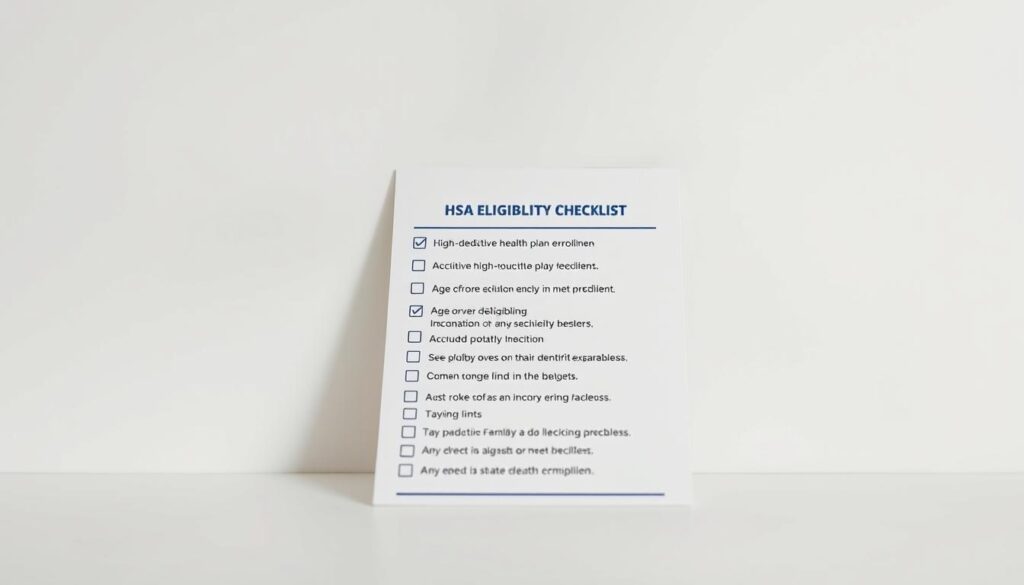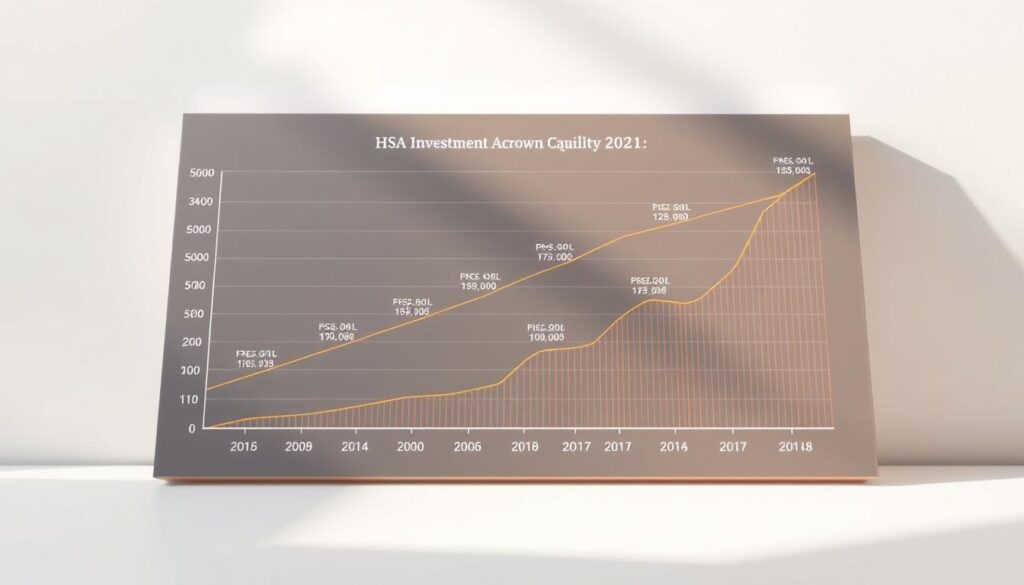Did you know a health savings account (HSA) can be one of the smartest financial moves you make? These accounts aren’t just for medical bills—they’re a powerhouse for growing your money tax-free. Whether you’re planning for next year’s checkups or retirement, an HSA offers unmatched flexibility.
What sets them apart? Triple tax advantages. Contributions lower your taxable income, earnings grow tax-free, and withdrawals for qualified expenses aren’t taxed. For example, a 40-year-old couple could stash away over $600,000 by retirement by maximizing their HSA.
This guide will show you how to get the most from your account. From covering today’s medical costs to building long-term wealth, we’ll break down the strategies that work. Ready to turn healthcare expenses into savings opportunities? Let’s dive in.
Key Takeaways
- HSAs provide triple tax benefits: deductible contributions, tax-free growth, and tax-free withdrawals for medical expenses.
- Funds roll over yearly, making them ideal for both short-term needs and long-term savings.
- Strategic use can turn an HSA into a retirement nest egg—think $600K+ for a couple starting at 40.
- 2023 contribution limits are $3,850 for individuals ($7,750 for families).
- Pair your HSA with a smart medical bill strategy to stretch every dollar.
Understanding Health Savings Accounts (HSAs) and How to Use Them
Not all healthcare accounts are created equal—HSAs stand out for their unique perks. These tax-advantaged tools are designed for those with high-deductible health plans (HDHPs), which in 2024 require minimum deductibles of $1,600 for individuals or $3,200 for families. Unlike other options, your HSA funds stay with you for life, even if you switch jobs or insurers.
What Is an HSA?
A health savings account is a triple-threat financial tool. You contribute pre-tax dollars, earnings grow tax-free, and withdrawals for medical costs aren’t taxed. To qualify, you must have an HDHP—no other coverage (like a general-purpose FSA) is allowed. Think of it as a 401(k) for healthcare, but with more flexibility.
How HSAs Differ from FSAs and Other Health Accounts
Flexible spending accounts (FSAs) might seem similar, but key differences matter. FSAs have a $3,200 annual cap (2025) and often require you to “use it or lose it” yearly. HSAs, however, let you roll over every dollar indefinitely. Plus, you can invest HSA funds for long-term growth—something FSAs rarely allow.
Another win? Portability. While FSAs are typically tied to your employer, an HSA moves with you. Change jobs? Keep the account. Retire early? Use it for non-medical expenses after age 65 (with regular tax rules). Just watch for IRS partial-year eligibility rules if you switch plans mid-year.
Why an HSA Could Be Your Best Financial Tool
Few financial tools pack as much punch as HSAs when it comes to tax perks. They’re like a Swiss Army knife for your finances—cutting your tax bill now while building future wealth. Let’s unpack why.
The Triple Tax Advantage Explained
Pre-tax contributions lower your taxable income. For example, a $1,000 deposit saves you $220 in federal taxes (22% bracket) plus $76 in FICA taxes if through payroll deductions. That’s nearly 30% saved upfront.
Earnings grow tax-free, whether from interest or investments. Unlike taxable brokerage accounts, you keep every dollar of growth. Withdrawals for qualified expenses? Also tax-free. It’s a rare trifecta.
“HSAs offer the only triple tax benefit in the U.S. tax code—contributions, growth, and withdrawals all escape taxes when used correctly.”
Long-Term Growth Potential Through Investing
Once your HSA funds exceed your deductible, consider investing. Many providers offer mutual funds or index funds. A $3,000 annual investment at 7% return grows to $250,000+ in 25 years.
Compare this to retirement accounts:
- No RMDs: Unlike 401(k)s, you aren’t forced to withdraw funds at age 72.
- Better than Roth: Tax-free withdrawals for medical costs beat Roth IRA rules.
With Fidelity estimating $165,000 in retiree healthcare costs, an HSA can be your safety net—and growth engine.
Eligibility Requirements for Opening an HSA
Not everyone can open an HSA; these requirements filter who gets in. Your insurance plan and personal circumstances dictate access to this powerful tool.

Qualifying High-Deductible Health Plans (HDHPs)
Your health plan must meet strict IRS criteria to qualify. For 2024:
- Minimum deductibles: $1,600 (individual) or $3,200 (family)
- Maximum out-of-pocket: $8,050 (individual) or $16,100 (family)
Verify with your benefits administrator—some HDHPs exclude HSA eligibility due to pre-deductible coverage perks.
Who Can (and Can’t) Contribute
Even with an HDHP, these rules apply:
- Yes: Students with qualifying coverage, military families using TRICARE, and dual-coverage households where one spouse has an HDHP
- No: Anyone enrolled in Medicare, claimed as a tax dependent, or whose spouse has non-HDHP coverage
“Medicare enrollment automatically disqualifies you from making contributions, even if you still have an HDHP.”
Employer deposits count toward annual limits ($4,150 individual/$8,300 family in 2024). Pro-rated rules apply if your eligibility changes mid-year.
Key exceptions: Veterans using VA benefits may qualify, and part-time workers can contribute if HDHP requirements are met.
How to Open and Fund Your HSA
Opening an HSA is simpler than you might think—here’s how to get started. With the right provider and funding strategy, you’ll unlock triple tax benefits faster than you’d expect.
Choosing the Right HSA Provider
Not all HSA providers are equal. Look for low fees, investment options, and mobile access. Top choices like Fidelity and Lively offer zero monthly fees and robust investment menus.
- Account fees: Some charge for paper statements or transfers
- Investment thresholds: Minimum balances before you can invest
- Customer support: 24/7 access for urgent medical expense questions
Contribution Limits and Deadlines
For 2025, you can stash away $4,300 individually or $8,550 for families. Those 55+ get an extra $1,000 catch-up. Miss the April 15 deadline? You lose that tax advantage forever.
“Pro-rata rules apply if your HDHP coverage starts mid-year—calculate your limit based on months eligible.”
Employer Contributions and Matches
75% of companies add employer funds to HSAs, per Fidelity. Typical matches range from $500-$1,500 yearly. Always check if vesting periods apply.
Maximize free money by:
- Opting for payroll deductions (avoids FICA taxes)
- Confirming match formulas—some require minimum contributions
- Tracking deposits separately from your own
Pro tip: Even if your employer offers an HSA, you can open a separate one elsewhere—just watch the annual limits.
Qualified Medical Expenses: What Your HSA Covers
Your HSA covers more than just doctor visits—discover the surprising expenses it can pay for. The IRS approves hundreds of qualified medical expenses, many of which might surprise you. From everyday needs to unexpected costs, your funds can stretch further than you think.
IRS-Approved Expenses You Might Not Know About
Beyond prescriptions and hospital bills, your account can reimburse these often-overlooked costs:
- Acupuncture: Approved for pain relief and chronic conditions.
- COVID-19 tests: At-home or lab tests qualify.
- Sunscreen (SPF 30+): Eligible with a doctor’s note.
- Breast pumps: Covered as durable medical equipment.
Even lead paint removal or guide dog training may qualify if medically necessary. Always check IRS Publication 502 for updates.
Tracking and Documenting Expenses
Keep records for seven years in case of audits. Use apps like Lively’s eligibility tool or QuickBooks to categorize receipts. For OTC medications, save itemized receipts showing the specific product—not just the total.
“Digital scans of receipts stored in cloud folders are audit-proof and save clutter.”
Avoid these common mistakes: Gym memberships, cosmetic procedures, and non-prescription vitamins aren’t eligible. Reimbursing ineligible costs triggers a 20% penalty plus income taxes.
Investing Your HSA Funds for Maximum Growth
Most HSA owners miss out on six-figure potential by leaving their funds uninvested. Fidelity reports only 20% utilize investment options, despite average balances growing 15% annually when invested. Your HSA funds can work harder than sitting in cash—here’s how to make them grow.

Smart Timing for Investing vs. Saving
Balance immediate needs with long-term gains using this approach:
- Emergency buffer: Keep 1-2 years’ worth of deductibles in cash
- Growth pool: Invest amounts above your safety net (typically $1,000+)
- Time horizon: 5+ year goals favor index funds; shorter terms need stable options
“HSAs with invested assets average 3X higher balances than cash-only accounts after 10 years.”
Powerful Investment Strategies
Once ready to invest, consider these proven methods:
| Option | Best For | Risk Level |
|---|---|---|
| Index funds | Hands-off investors | Moderate |
| Target-date funds | Retirement-focused | Adjusts over time |
| ETF portfolios | Cost-conscious | Varies |
Dollar-cost averaging works well with HSA funds—investing $250 monthly smooths out market swings. Unlike taxable accounts, you can rebalance without tax hits, making adjustments painless.
Remember: Medical needs come first. Always maintain enough liquid savings to cover unexpected bills while letting the rest grow over time.
HSAs and Retirement: A Powerful Combo
Your HSA holds a secret retirement superpower most people overlook. While designed for medical costs, these accounts can become tax-advantaged retirement vehicles when used strategically. The average couple faces $300,000 in healthcare costs post-retirement—your HSA could cover every penny tax-free.
Turning Healthcare Savings Into Retirement Gold
Unlike 401(k)s, HSAs have no required minimum distributions (RMDs). This lets your funds grow untouched until needed. A 45-year-old investing $3,850 annually at 7% return would amass $250,000 by age 65—tax-free for medical withdrawals.
“Using an HSA for retirement healthcare costs saved one couple $75,000 in lifetime taxes versus tapping a 401(k).”
Even non-medical withdrawals after 65 work like traditional IRAs—you pay income taxes but no penalty. This flexibility makes HSAs ideal for:
- Medicare Part B/D premiums (IRS-approved expense)
- Long-term care insurance payments
- Dental/vision costs not covered by Medicare
Smart Inheritance Strategies
Spouses inherit HSAs tax-free and can use them as their own. Non-spouse beneficiaries get taxed on the account’s value but avoid probate. Pro tip: Name contingent beneficiaries to prevent assets from going through estate.
For maximum growth, delay reimbursements while keeping receipts. You can withdraw funds tax-free years later for past expenses, letting investments compound. Just maintain meticulous records—the IRS allows this “retroactive reimbursement” strategy indefinitely.
Avoiding Common HSA Mistakes
Even savvy savers can stumble with HSAs—here’s how to dodge costly errors. A single misstep could trigger penalties or wasted opportunities. Let’s navigate the pitfalls keeping your account safe and growing.
Penalty Pitfalls to Avoid
Non-qualified withdrawals before age 65 face a 20% penalty plus income taxes. Common triggers include:
- Vacation charges: Hotel stays during medical travel qualify—but not the leisure days.
- Cosmetic procedures: Teeth whitening fails the test unless medically necessary.
- Over-the-counter items: Need a doctor’s note for eligible OTC purchases.
“Correct excess contributions by April 15 to avoid 6% excise taxes. File Form 5329 if missed.”
Truth About HSA Expiration
Unlike FSAs, your funds never vanish. Debunk these myths:
- Job changes: Your HSA stays active regardless of employment.
- Inactivity fees: Some providers charge these—not IRS rules.
- Estate transfers: Spouses inherit tax-free; others pay income taxes.
For peace of mind:
- Set calendar alerts for contribution deadlines
- Scan receipts to cloud storage
- Review IRS Publication 502 annually
Conclusion
Your health savings account isn’t just another financial tool—it’s a game-changer. With triple tax benefits and long-term growth potential, it outperforms most retirement plans. The key? Start early and invest wisely.
Check if your insurance qualifies as an HDHP today. Compare providers with low fees and strong investment options. Even small, regular contributions add up—$250 monthly could grow to $300,000+ over 25 years.
Ready to take control of your future? Consult a tax advisor, set your contribution goals, and watch your savings work harder. The path to financial security starts now.
FAQ
What’s the difference between an HSA and an FSA?
Unlike FSAs, HSAs don’t have a “use-it-or-lose-it” rule. Your funds roll over yearly, and you can invest them for growth. Plus, you own the account even if you change jobs.
Can I use my HSA for non-medical expenses?
Before age 65, non-qualified withdrawals face a 20% penalty plus income taxes. After 65, you’ll pay taxes but no penalty—similar to a traditional IRA.
How do I know if my health plan qualifies for an HSA?
Your plan must meet IRS requirements for a high-deductible health plan (HDHP). Check the deductible and out-of-pocket limits—for 2023, it’s
FAQ
What’s the difference between an HSA and an FSA?
Unlike FSAs, HSAs don’t have a “use-it-or-lose-it” rule. Your funds roll over yearly, and you can invest them for growth. Plus, you own the account even if you change jobs.
Can I use my HSA for non-medical expenses?
Before age 65, non-qualified withdrawals face a 20% penalty plus income taxes. After 65, you’ll pay taxes but no penalty—similar to a traditional IRA.
How do I know if my health plan qualifies for an HSA?
Your plan must meet IRS requirements for a high-deductible health plan (HDHP). Check the deductible and out-of-pocket limits—for 2023, it’s $1,500+ for individuals or $3,000+ for families.
What happens to my HSA if I switch jobs?
Your account stays with you. You keep all funds, and can continue using them for eligible expenses or let investments grow tax-free.
Are dental and vision costs HSA-eligible?
Yes! Braces, glasses, LASIK, and even certain over-the-counter items (with a prescription) qualify. Always check IRS guidelines for updates.
Can I invest my HSA funds like a 401(k)?
Absolutely. Many providers offer mutual funds or ETFs. Just keep enough cash for near-term medical bills to avoid selling investments at a loss.
Do employer contributions count toward my annual HSA limit?
Yes. For 2023, the total limit is $3,850 (individual) or $7,750 (family)—including both your and your employer’s contributions.
How do I prove an expense is HSA-eligible?
Save receipts and explanation of benefits (EOB) statements. You don’t submit them yearly, but the IRS may request documentation during an audit.
,500+ for individuals or ,000+ for families.
What happens to my HSA if I switch jobs?
Your account stays with you. You keep all funds, and can continue using them for eligible expenses or let investments grow tax-free.
Are dental and vision costs HSA-eligible?
Yes! Braces, glasses, LASIK, and even certain over-the-counter items (with a prescription) qualify. Always check IRS guidelines for updates.
Can I invest my HSA funds like a 401(k)?
Absolutely. Many providers offer mutual funds or ETFs. Just keep enough cash for near-term medical bills to avoid selling investments at a loss.
Do employer contributions count toward my annual HSA limit?
Yes. For 2023, the total limit is ,850 (individual) or ,750 (family)—including both your and your employer’s contributions.
How do I prove an expense is HSA-eligible?
Save receipts and explanation of benefits (EOB) statements. You don’t submit them yearly, but the IRS may request documentation during an audit.


